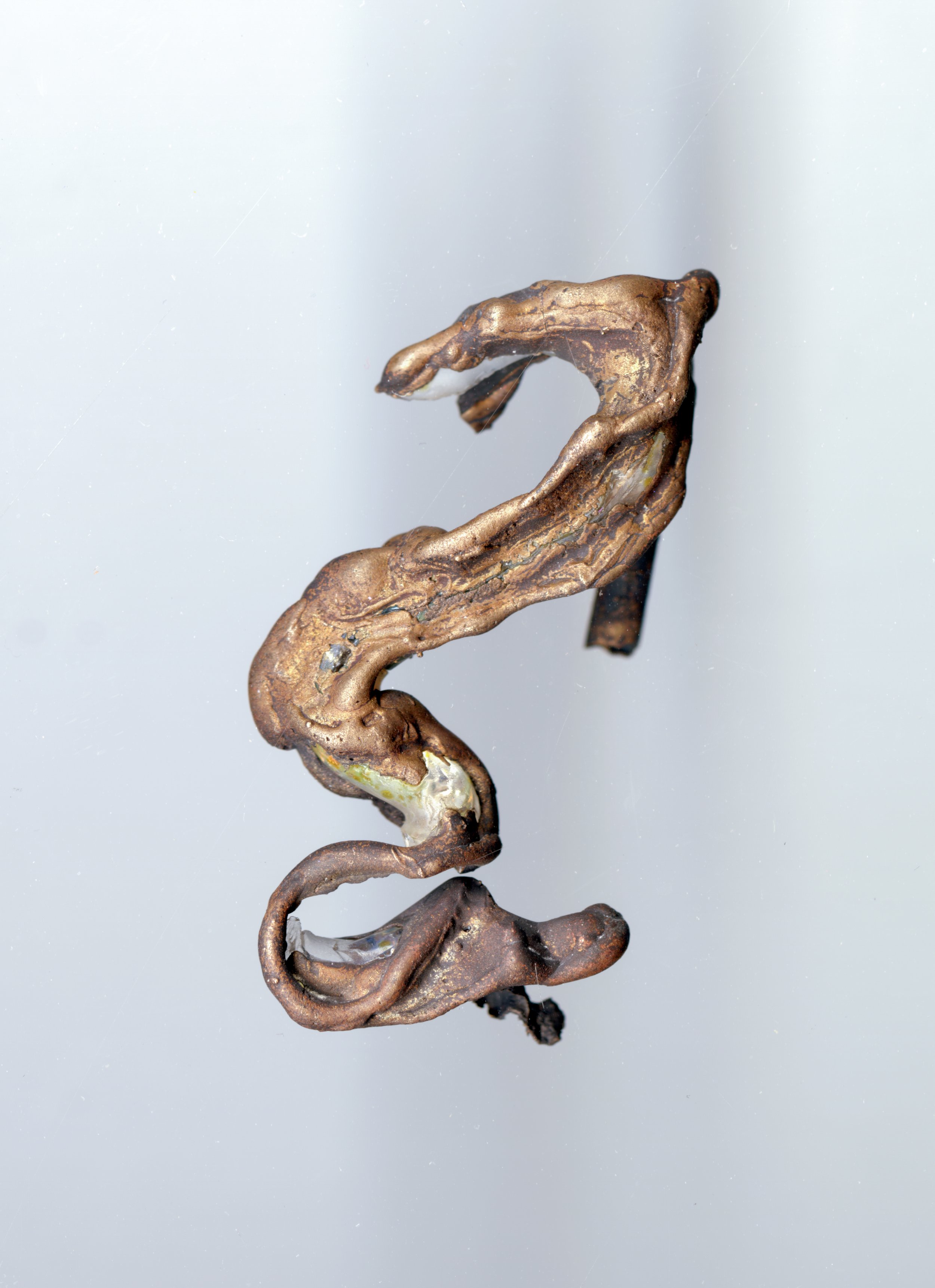PROCESS AS RITUAL: AN UPDATE FROM MAHZAD
Leaning into the frequencies of pain and tragedy, Mahzad’s work leverages a so-called metamorphosis that unsurprisingly align with her personal life. What came first—the pain or the girl? This question lingers as she shape shifts following her recent move from Tehran to the Suburbs of Upstate New York pursuing a Master’s degree: a woman who is very literally shedding skins as she carves her own path.
Glass and metal are her chosen materials—fused through a process of ritualized alchemy, each piece anchored in the incidents that shape her identity. The electroforming protocol, itself volatile and sacred, is one of natural divination: a transference of wax to metal through clear intention, heat and the patience to see it through.
“We don’t control the circumstances of our pain,” she says when we chatted over Zoom “but we can succumb to its transformation. What emerges through this is uncontrolled, personal, and unique.”
Her reference to The Metamorphosis is coy and still refreshing to see in someone in her space: “Who wants to wake up in the morning and realize they’ve shape-shifted into a cockroach? No one chooses to feel this way, but we have no choice but to go through it.”
There’s a fetishistic desire for pain in Mahzad’s work, a quiet acknowledgement that the creative process is often times born from our own romantic negotiations with emotions. “Our existence is tragic from the start,” she reflects half laughing. “There’s no way out.” Critical to her creative journey is the analysis of her own identity and behavior. This transformation through inward reflection is at once violent and tender and clearly mirrored in her materials.
For Mahzad, jewelry is not an ornament—it’s an artifact of ugliness, tragedy, and imperfection. Her work is a reflection of the inner fight one has with oneself, especially as a woman. Channeling modern distortions of girlhood, her work balances against this kind of lingering innocence.
Even the tools leave marks. The burning glass, the jagged metals— have all left visible scars on her hands. These aren’t Kafkaesque metaphors but blistering all the same. The change is visceral, not imagine. A dance of becoming through darkness—ritualized through chaos.
Now living and working in the sterile American suburbs, Mahzad finds herself excommunicated from her old Tehran self. “I’ve always wanted to leave Iran,” she says. “But for the first time, I’m not in Iran for Nowruz… and I don’t want to be here either. It’s really hard to be away from home.”
Most of all, she misses driving.
















